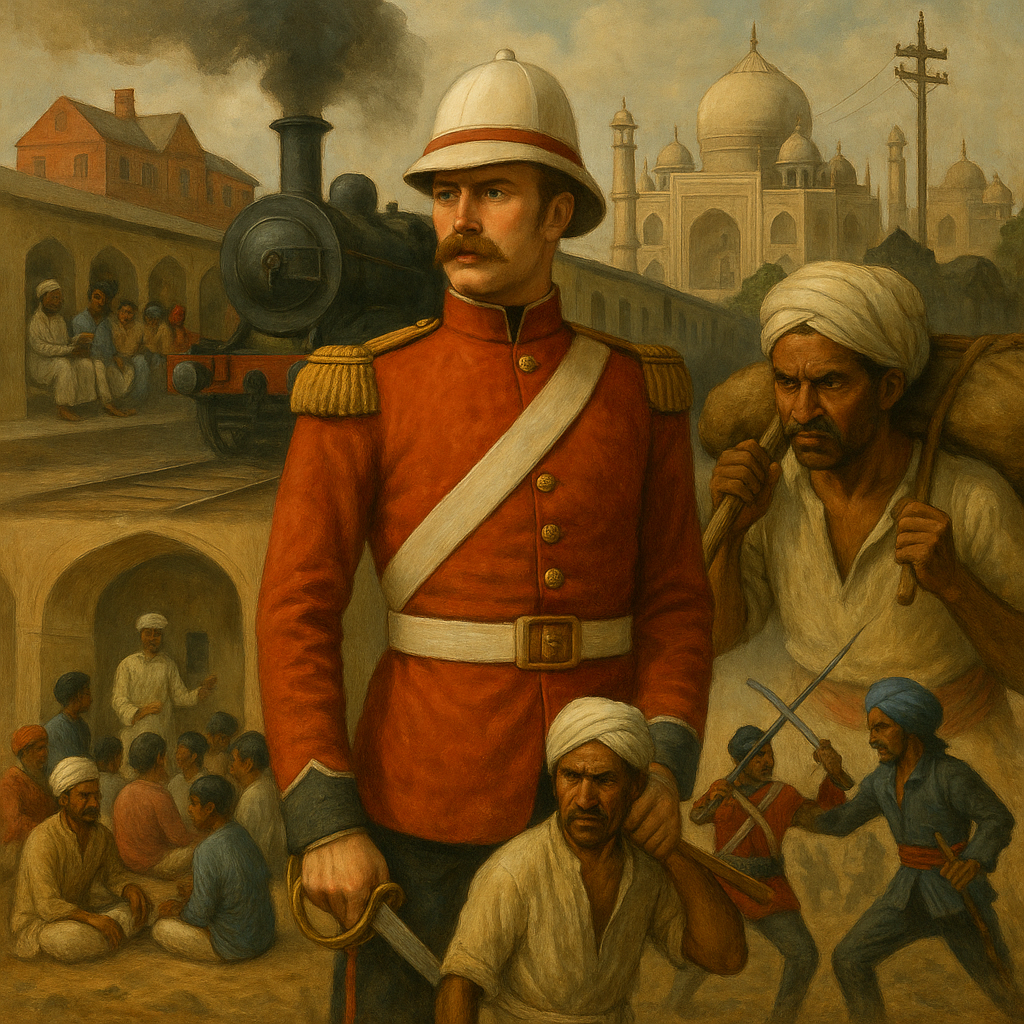Lesson 3: Europeans and Americans in Asia and the Pacific (Industry and Imperialism)
The British in India
In the 1700s and 1800s, Britain slowly took control of India. At first, the British came to trade using the East India Company, but later they used soldiers to control land and people. India had many valuable things: spices, tea, and cotton.
The British built railroads, schools, and telegraph lines, but they also made Indian people follow British rules. Many Indians were upset. In 1857, there was a big rebellion called the Sepoy Rebellion, where Indian soldiers fought back. The British stopped the rebellion and took full control of India.
📖 Story: Rani Lakshmibai, a brave Indian queen, fought in the rebellion. She rode into battle on a horse with her young son tied to her back. People still remember her as a hero of India.
🏯 Europeans in China
China was a powerful empire, but European countries wanted to trade more there. When China said “no,” Britain started the Opium Wars. Britain brought a drug called opium into China. Many people became sick and addicted.
China lost the war and had to give up land like Hong Kong and let Europeans trade freely. Chinese people were angry. In 1900, a group called the Boxers tried to push out the foreigners, but they failed.
📖 Story: A Chinese farmer in the countryside once sold silk and tea to British traders. But after the Opium War, he saw foreign soldiers walk through his village, and his neighbors became sick from opium. His peaceful life was never the same.
🗾 The West in Japan
Unlike China, Japan chose to change before a war could happen. In 1853, a U.S. ship came with big cannons and asked Japan to open its ports. Japan agreed. Soon, Japan learned Western technology and built factories, railways, and schools.
This time in Japanese history is called the Meiji Restoration. Japan became modern and powerful in just a few decades.
📖 Story: A boy in Tokyo once watched in amazement as a steam train passed through his town for the first time. He later became an engineer and helped build Japan’s first modern factory.
Australia and New Zealand
Britain sent ships to Australia in the late 1700s. The first British settlers were prisoners sent to live far from home. Later, many free settlers came too. They took land from the Aboriginal people, who had lived there for thousands of years.
In New Zealand, the British made agreements with the native Maori people, but soon fights started. The Maori lost much land, but their culture stayed strong.
📖 Story: An Aboriginal elder once told her grandchildren about the stars and animals. But after settlers built farms, the stars were harder to see and animals were gone. She said, “Our land remembers everything.”
